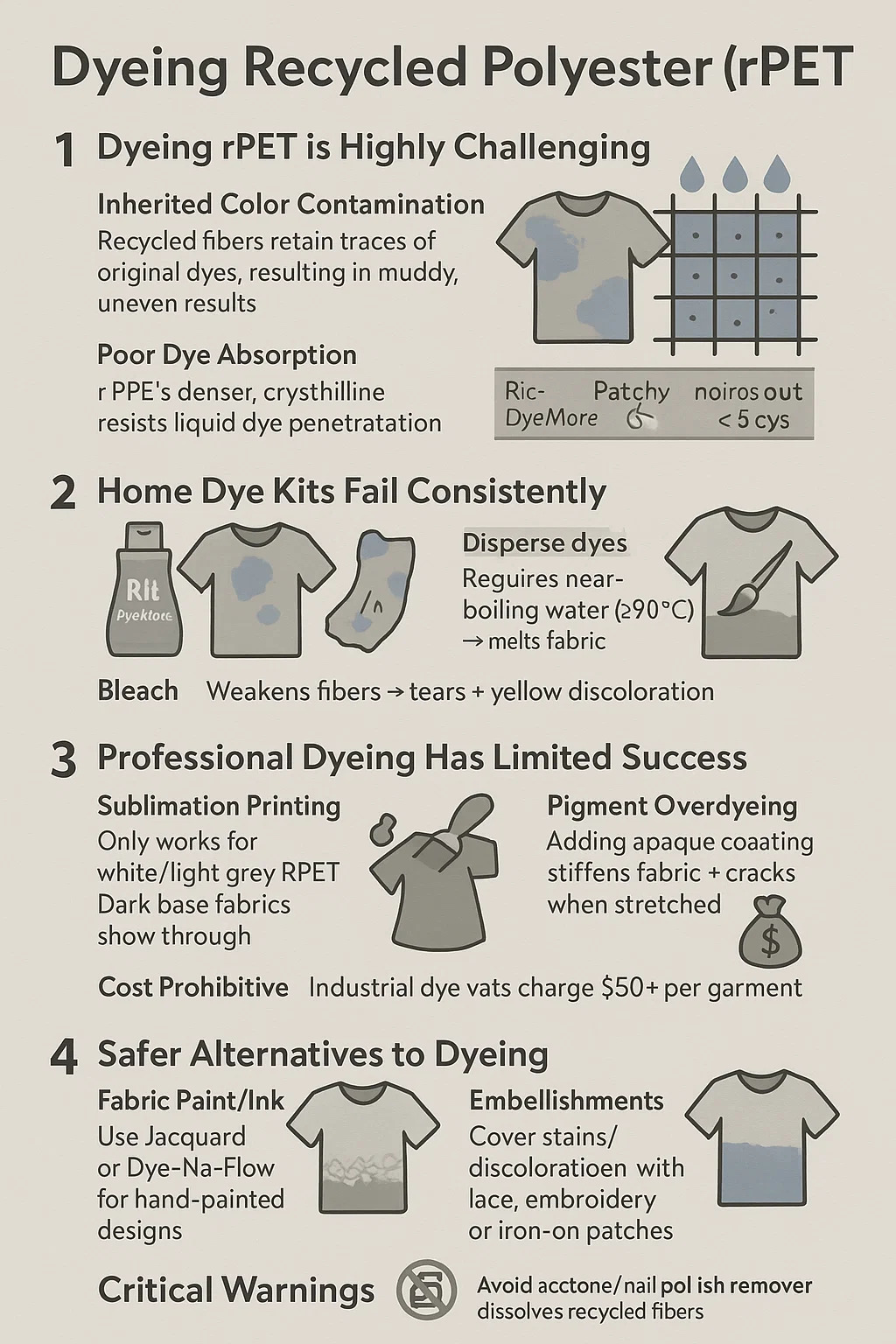Search by posts
Calendar
Industry News
 By Admin
By Admin
Can i dye this recycled polyester dress?
Here's a straightforward breakdown of dyeing recycled polyester (rPET), based on textile industry realities:
Content
1. Dyeing rPET is Highly Challenging
Inherited Color Contamination: Recycled fibers retain traces of original dyes (blues/greys from plastic bottles), causing muddy, uneven results.
Poor Dye Absorption: rPET's polymer structure is denser and more crystalline than virgin polyester, resisting liquid dye penetration.
2. Home Dye Kits Fail Consistently
| Method | Result on rPET |
|---|---|
| Rit DyeMore® | Patchy color; washes out in <5 cycles |
| Disperse dyes | Requires near-boiling water (≥90°C) → melts fabric |
| Bleach | Weakens fibers → tears + yellow discoloration |
3. Professional Dyeing Has Limited Success
Sublimation Printing: Only works for white/light grey rPET; dark base fabrics show through.
Pigment Overdyeing: Adds opaque coating (like paint) → stiffens fabric + cracks when stretched.
Cost Prohibitive: Industrial dye vats charge $50+ per garment for inconsistent results.
4. Safer Alternatives to Dyeing
Fabric Paint/Ink: Use Jacquard or Dye-Na-Flow for hand-painted designs (test on seams first).
Embellishments: Cover stains/discoloration with lace, embroidery, or iron-on patches.
Dip-Dye Ombré: Only dye hem/cuffs 2-3cm deep to avoid fabric stress.
5. Critical Warnings
Never use boiling water – rPET deforms at 70°C+ (lower than virgin polyester).
Avoid acetone/nail polish remover – dissolves recycled fibers.
Heat-setting ruins elasticity: Ironing "fixes" dye but makes fabric brittle.


